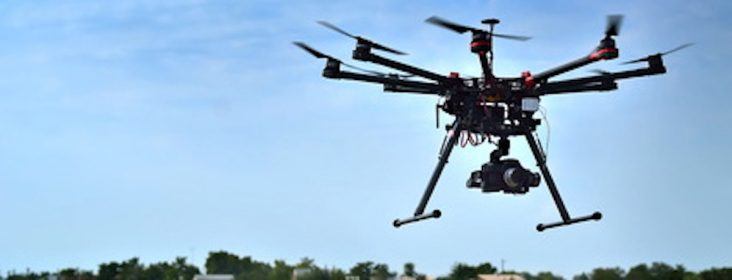Drone Notes: June 2016
by June 5, 2016 5:06 pm 321 views

Flying with a drone for video and photo productions
In this edition of Drone Notes, we are exploring stories in five different areas, Science, Startups, Privacy, Education, and Defense. Finally, we bring you a video that explores four ways to take down illegal drones.
Science
If the United States were to have a national disaster such as the Fukushima Daiichi Nuclear Disaster in 2011 , there may be use for drones to help sniff out the dangerous energy.
According to the Washington Times:
“Nevada National Security Site officials have purchased two unmanned aerial vehicles to sniff the sky and provide an eye from above in the event of an emergency.”
The idea is to use pilotless aircraft, or drones, in a situation where manned aircraft may not be safe according to Jim Hold, the president of National Security Technologies.
Seven people are being trained to have the unmanned aerial systems running by the fall.
Startups
Drones and agriculture are fast becoming unified industries as we know here in the Natural State. Drone Solutions is an emerging startup that recently won the undergraduate division of the Governor’s Cup.
These type of startups are popping up across the country and across the globe. A new startup, Gamaya, combines the use of artificial intelligence and drones to help farmers assess their land and crops.
According to Fortune, the company recently raised more than 3.2 million Swiss Francs ($3.2 million). The startup isn’t the only one employing drones and artificial intelligence.
“The Swiss startup isn’t the only company looking to employ drones and AI to help out farmers. Other startups include NoukaTech, PrecisionHawk, Vine Rangers, Airware and many others. Investors worldwide are flocking to fund some of the hottest companies in this sector—Cisco’s executive Chairman John Chambers just invested in Airware and took a board seat.” Learn more here.
Privacy or Security?
With the skyrocketing use of drones, a panel of of technology companies and privacy experts offered some suggestions for drone use at a meeting in Dallas recently.
The meeting was organized by the Obama administration and the suggestions are voluntary. Experts and businesses hope the suggestions can hold off tougher regulations. The fear is that the regulations could smother the drone industry, which is in the early years of existence.
Those interested can read the guidelines here. For more on the story, check out U.S. News & World Report.
Education, STEM
Megan Salter, a teacher from Huntington, West Virginia, organized a Drone Olympics for students in her Talented and Gifted Program. The project was a result of a $2,960 grant from West Virginia Gov. Earl Ray Tomblin’s STEM Initiative to “implement the future of drone technology in the classroom.”
The teacher used the Drone Project to focus in on STEM (Science, Technology, Engineering, and Math) “to provide students with hands-on learning experiences using technology to promote questioning, problem solving and collaborative learning.”
Learn more here about the project.
Defense
How do you take down a drone if you are in charge of defense? The Department of Defense and Homeland Security just purchased 100 DroneDefender Systems as a defense against malicious flyers who might use drones to deliver bombs, make prison drug drops or even spy.
According to Fortune:
“The DroneDefender, developed by the technology think tank Battelle, looks like a really scary gun—but it isn’t quite what it appears. Instead of shooting anything as pedestrian as a projectile, or even a net, the DroneDefender is really more of a gun-shaped radio. Its signal, which reaches about 400 meters according to Ars Technica, can interrupt either the control frequencies of a drone, or its access to GPS coordinates.”
The idea is to interrupt control frequencies, but there is some debate on what will happen. Expect this to be the beginning of a longstanding battle between makers of drones and those that need, or wish, to bring them down.
Video
4 WAYS TO TAKE DOWN ILLEGAL DRONES
